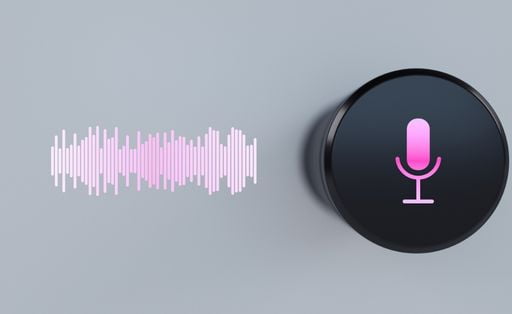Have you ever finished a phone call with a customer and thereafter tried to repeat what was expressed in your head? You have composed notes of the chat but perhaps neglected a focal detail that the customer shared with you.
With advances in digital technology, it is now easier than ever to convert audio recordings into text. Thanks to artificial intelligence (AI) software, transcribing long audio recordings no longer requires the tedious task of manually typing out the entire recording.

Discover how AI-powered transcription can save you time and make your life easier.
Contents
Call recording
Notetaking while on calls can be cumbersome and distracting. Call recording offers an alternative by letting you save your conversations to the cloud, so that you may revisit them when needed. This method works for the following types of calls, giving you access to a digital recording of the proceedings at any time in the future.
- Enquiry Call – record voice and video calls (VoIP-to-VoIP Calls among Visitors and Staff members) in the enquiry room
- Outbound Call – record outbound (PSTN) voice calls from Dial pad and Contacts
- Internal Call – record voice and video calls (VoIP-to-VoIP calls among Staff members), including when dialed from an extension number
- Conference Call – record voice calls in the conference room
Voice notes
Voice notes are the new text messages for millennials, who rely on them more than any other generation for quick communication. A transcribe feature can be a useful way to keep a record of what was said during the conversation, as well as help you prepare for follow-up conversations.
Voicemails
For entrepreneurs who receive a lot of voicemails, it may be beneficial to invest the time to transcribe them. By monitoring customer expectations, identifying what they appreciate about your products or services, and looking for new ways to enhance them, you can gain helpful insight.
What is audio transcription?
Audio transcription is the process of converting sound recordings, such as lectures, speeches, podcasts, and audio tracks, into a written text form. By doing this, you can take advantage of the convenience of text files that are much easier to share, use, and access for business decisions compared to audio files.
Transcribing audio files to text can enable businesses to quickly track down conversations and find key pieces of information. Transcribed audio allows users to easily search for keywords in long conversations, saving considerable time compared to manually reviewing large amounts of audio content.
Understand How AI Technology Transcribes Audio into Text
While a 100% accurate transcription of audio to text isn’t possible, most AI technologies offer features that optimize transcripts for accuracy. It does this by making use of natural language processing (NLP), which helps recognize patterns in conversations and speech patterns.
The technology also utilizes sophisticated algorithms that can distinguish between voices, identify words and phrases, and filter out background noise from the audio recording.
Converting audio recordings to text is a helpful tool for a range of people and organizations, including journalists, professionals, students, and businesses.
This feature is also becoming evident in call centers that handle a high volume of calls. Customer service representatives may need to transcribe massive amounts of audio content. With an efficient transcription solution, tackling a large volume of transcription work can be achieved.
What Are the Benefits of Transcribing Audio Files to Text

Transcribing audio files to text can provide a number of benefits, including increased accuracy and accessibility, quicker search capabilities, and the ability to repurpose content.
Conversion of audio files to text makes it easier to share information with colleagues, store conversations in a digital archive, and even improve customer service by providing a more detailed record of client interactions.
Let us explore some of the significant benefits.
Accessible records of conversations
Through AI-powered audio transcriptions, you can have access to a written record of your conversations with a wider audience. This makes it easier for you to keep track of what’s been discussed, as well as find key bits of information that may not have been included in the original recording (like dates and times).
Improves workflow efficiency
Collecting information through transcription can be used to improve your team’s core performance. For instance, you can use the transcripts to train employees on common questions and answers that come up when interacting with clients.
This makes it easier for them to anticipate what customers may say during conversations and prepare accordingly—all without having anyone listen to all of the recordings again.
Reduce file size to increase profits
By converting audio and video files to text, you can make documents more accessible for future reference while also reducing your capital investment in servers and data centers.
This is especially advantageous for businesses such as those in the financial sector that must abide by certain regulations requiring them to store records of conversations for several years.
Repurposing content for a wider audience
Audio transcription is not just helpful for the customer support teams but can also prove beneficial for your marketing and corporate communications teams.
Transcribed audio files can give your team the flexibility to publish them as blog posts and articles, eBooks, whitepapers, infographics, etc. Search engines can easily crawl the entire transcribed text and index it, giving you leverage over your competitors to rank higher on the search results.
Flexibility viewing transcripts in sound-sensitive environment
Having transcripts available in a sound-sensitive environment can be incredibly beneficial. Not only does this give users the opportunity to stay informed and up-to-date on events, but it also allows for greater flexibility in viewing the information.
For example, those who are hard of hearing or have difficulties understanding what is being discussed in audio can quickly and easily find their place by referring to the corresponding section in the transcript.
Additionally, having transcripts readily available enables people to jump back and forth between sections more easily allowing for more efficient conversations and deeper learning about any particular subject matter.
Unleash the power of AI transcription
With advancements in technology, it is now possible to transform an audio recording into a written document quickly and easily.
Audio recording to text can be an incredibly helpful tool for companies looking to better understand their customers’ needs and wants. Through audio recordings, companies can transcribe voice data into text documents which are then analyzed for the insights behind them. With this method, companies can unlock a wealth of potential by extracting the true power of their customer’s spoken words.
AI transcription is more accurate and faster than traditional transcription methods. Since AI algorithms are trained to identify and analyze speech patterns, they can understand the content of an audio file without any issues.
Audio transcription can open up a world of potential benefits for you and your team. By employing this tool, you can boost productivity while equipping your team with the skills and resources necessary to succeed. Depending on what you need, audio transcription can be used in a variety of creative ways to achieve your desired goals.
Byline: Gunalan is in Strategy Marketing with CINNOX, a comprehensive communication platform that creates a delightful experience for teams and customers.
